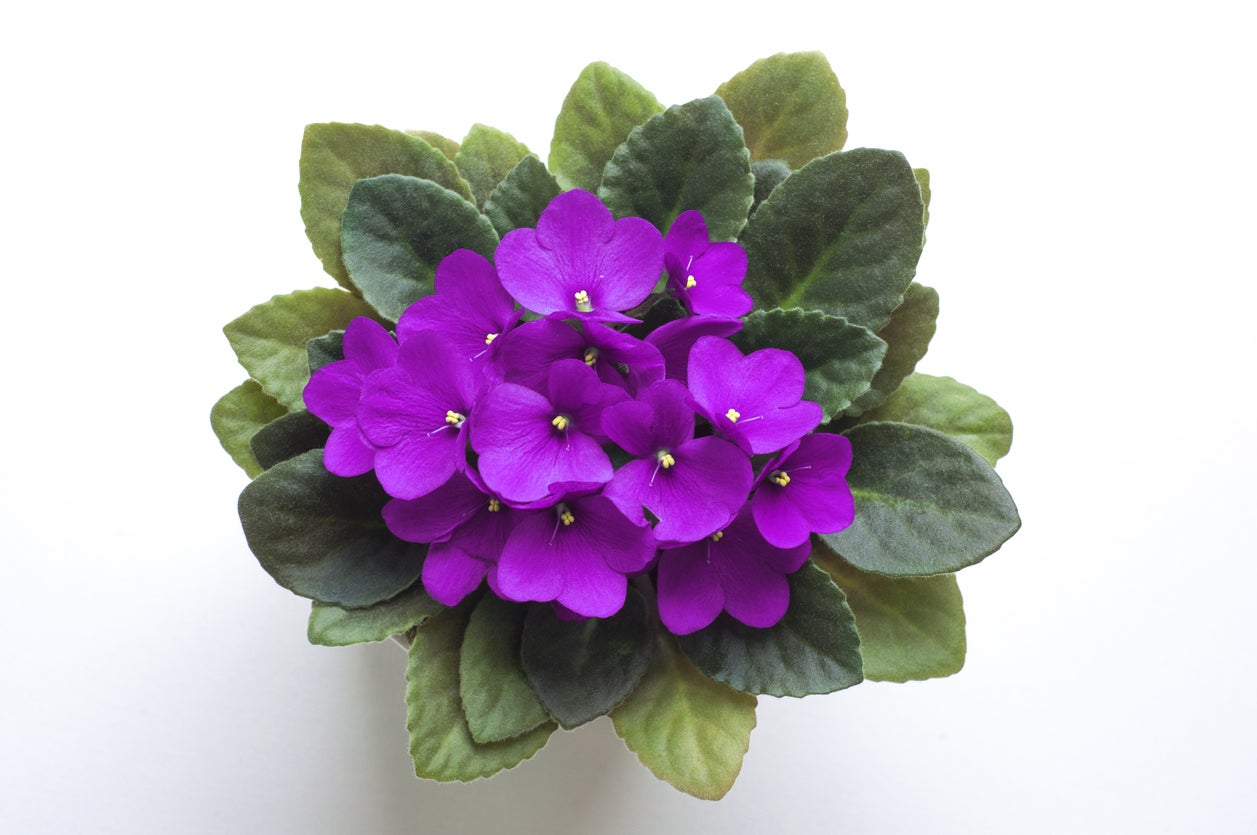African Violet Flowering Needs: Tips For Getting African Violets To Bloom


African violets (Saintpaulia ionantha) are native to the coastal woods of east Africa, but they have become popular indoor plants in the United States. The blooms are shades of deep purple and, in proper light, the plants can flower all year long. Most of the plants are sold when flowering. After that though, people can have trouble getting African violets to bloom.
What should you do if your African violate won’t flower? Read on for info on African violet flowering needs including tips on how to make African violets bloom.
No Flowers on African Violet
It happens all too often. You buy beautiful African violets and bring them home. As the blooms die, you wait eagerly for more buds, but none appear. You look each morning but see no flowers on African violet plants.
While there is no immediate fix for getting African violets to bloom, the care you give your plant goes a long way to encouraging or preventing flowering. Check and make sure you are meeting all African violet flowering needs.
How to Make African Violets Bloom
Like every other plant, African violets require sun to thrive. If your African violet won’t flower, too little light is the most likely cause. Bright light is a big part of African violet flowering needs. In an ideal world, the plants would get six to eight hours a day of light. If they get too little, they simply stop blooming.
Incorrect irrigation can be another reason your African violet won’t flower. These plants like their soil to stay evenly moist, so don’t let them dry out completely between waterings. When plants get too much or too little water, their roots are impacted. Plants with damaged roots stop blooming to save energy.
When your African violet won’t flower, it could also be caused by too little humidity. These plants like air with a humidity of 40 percent or greater.
Sign up for the Gardening Know How newsletter today and receive a free copy of our e-book "How to Grow Delicious Tomatoes".
It might also be temperature. Like humans, African violets prefer temperatures between 60 and 80 degrees F. (15-27 C.).
Finally, fertilizer is important. Buy and use a fertilizer formulated for African violets. Alternatively, use a balanced fertilizer that contains nitrogen, phosphorus, and potassium.
When all these care requirements are fulfilled, your African violets will be healthy and happy – and will reward you with plenty of blooms.

Teo Spengler is a master gardener and a docent at the San Francisco Botanical Garden, where she hosts public tours. She has studied horticulture and written about nature, trees, plants, and gardening for more than two decades, following a career as an attorney and legal writer. Her extended family includes some 30 houseplants and hundreds of outdoor plants, including 250 trees, which are her main passion. Spengler currently splits her life between San Francisco and the French Basque Country, though she was raised in Alaska, giving her experience of gardening in a range of climates.